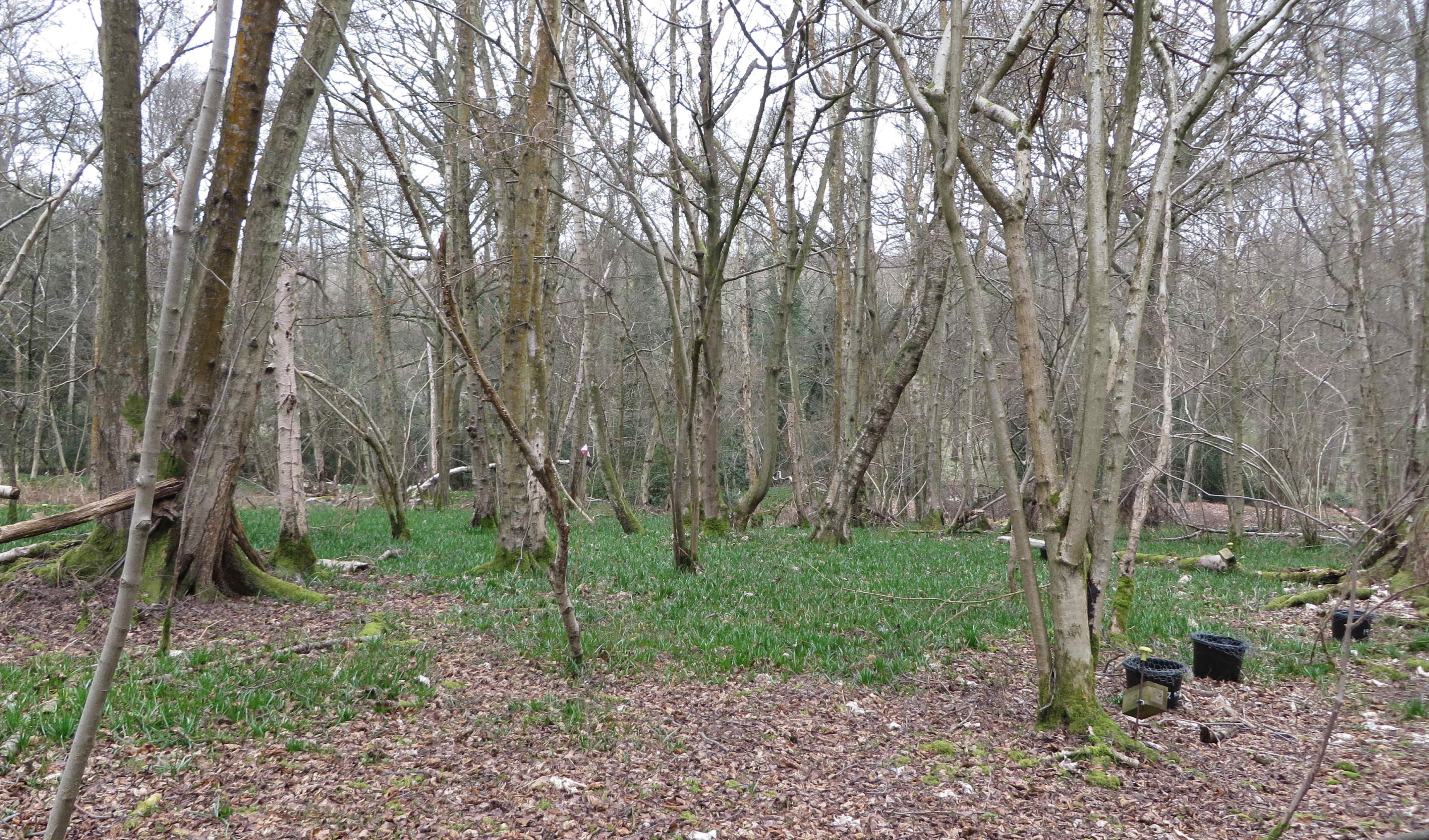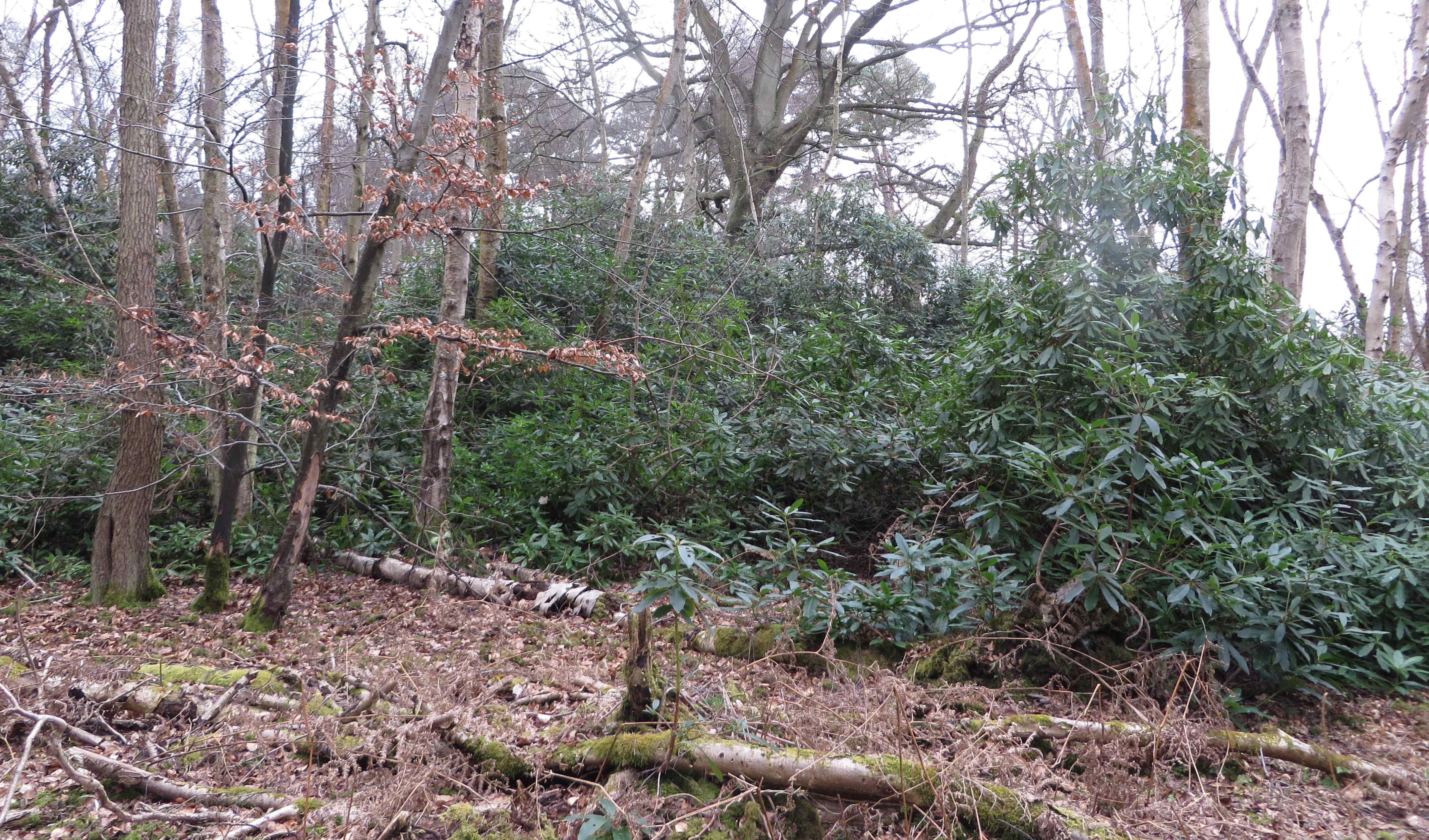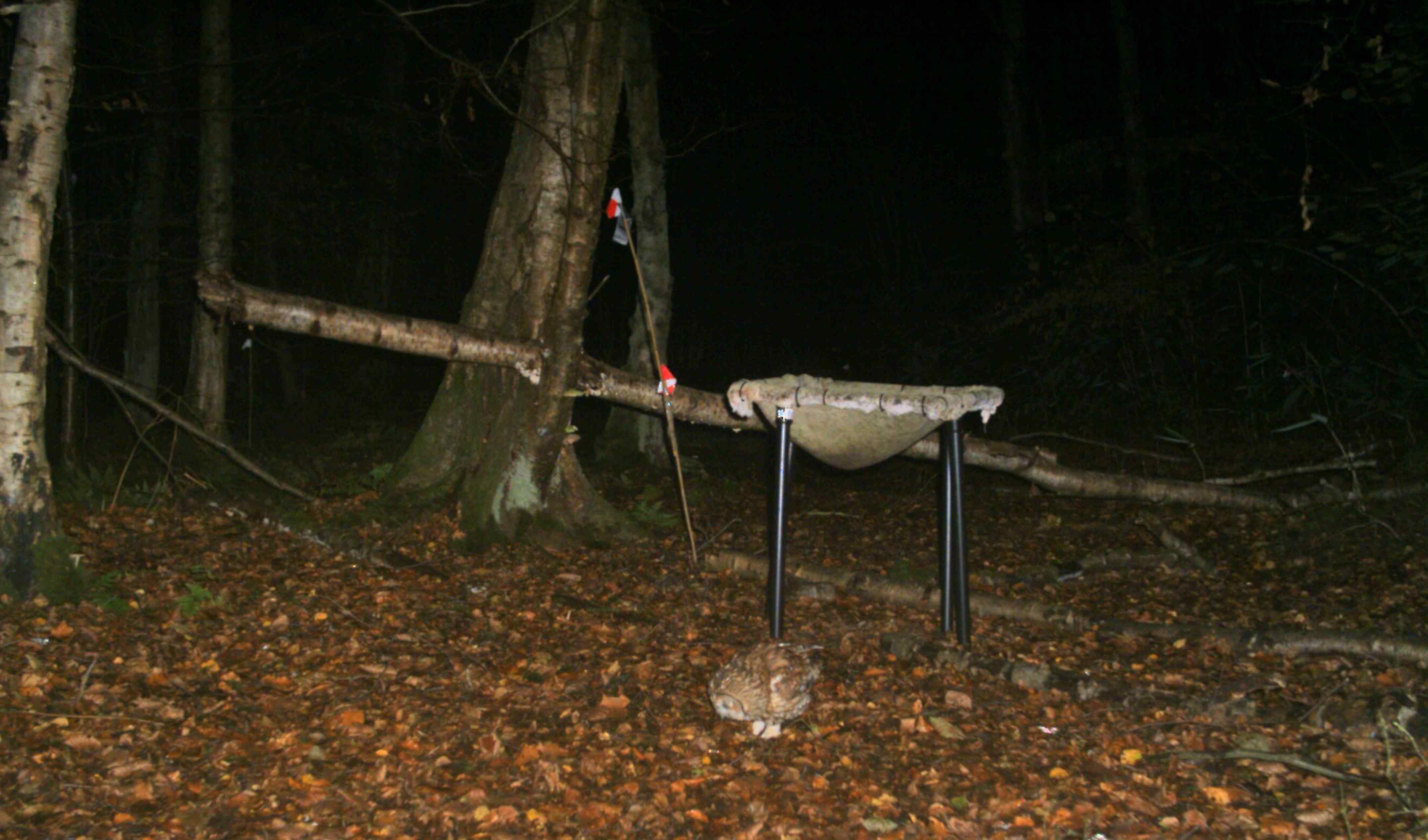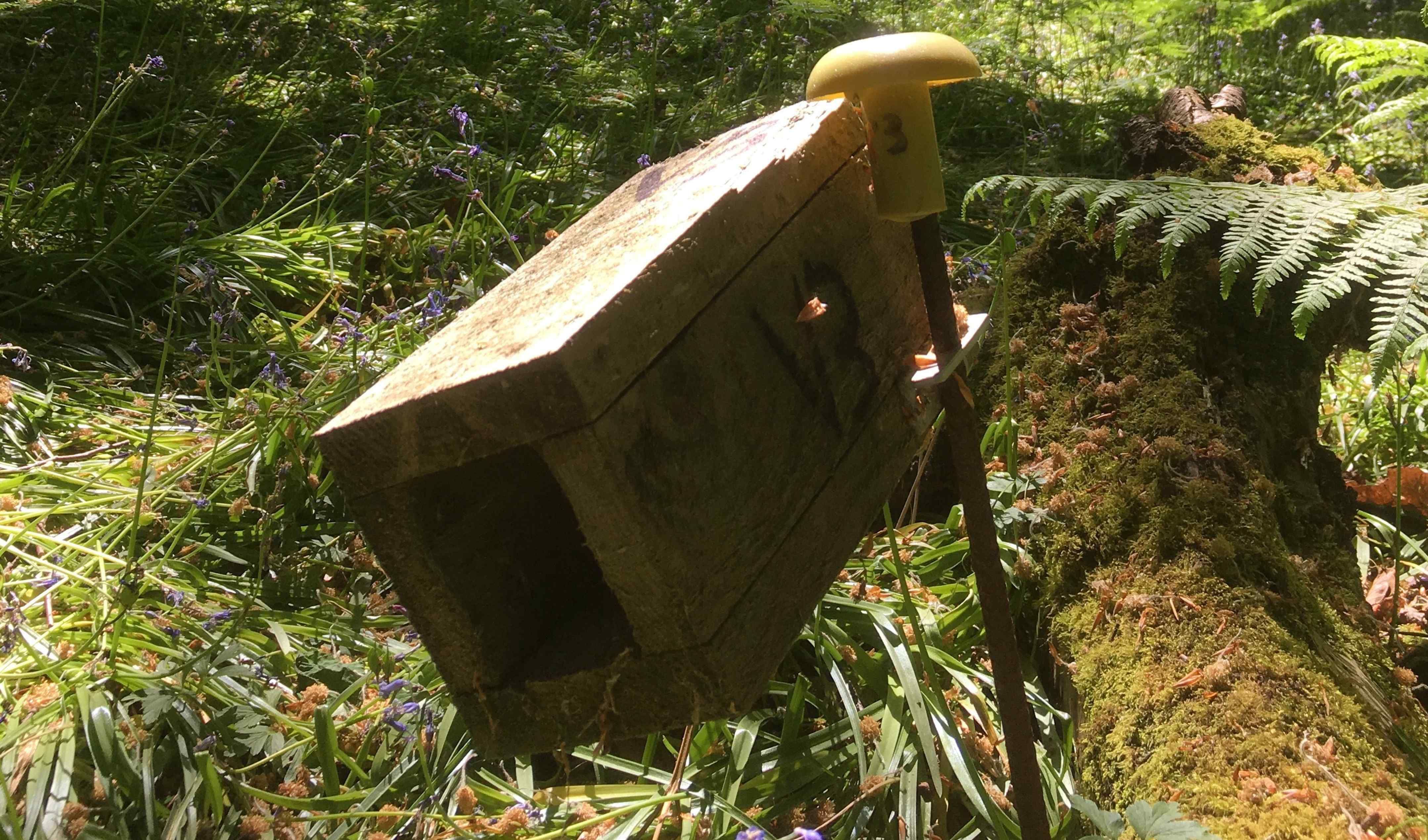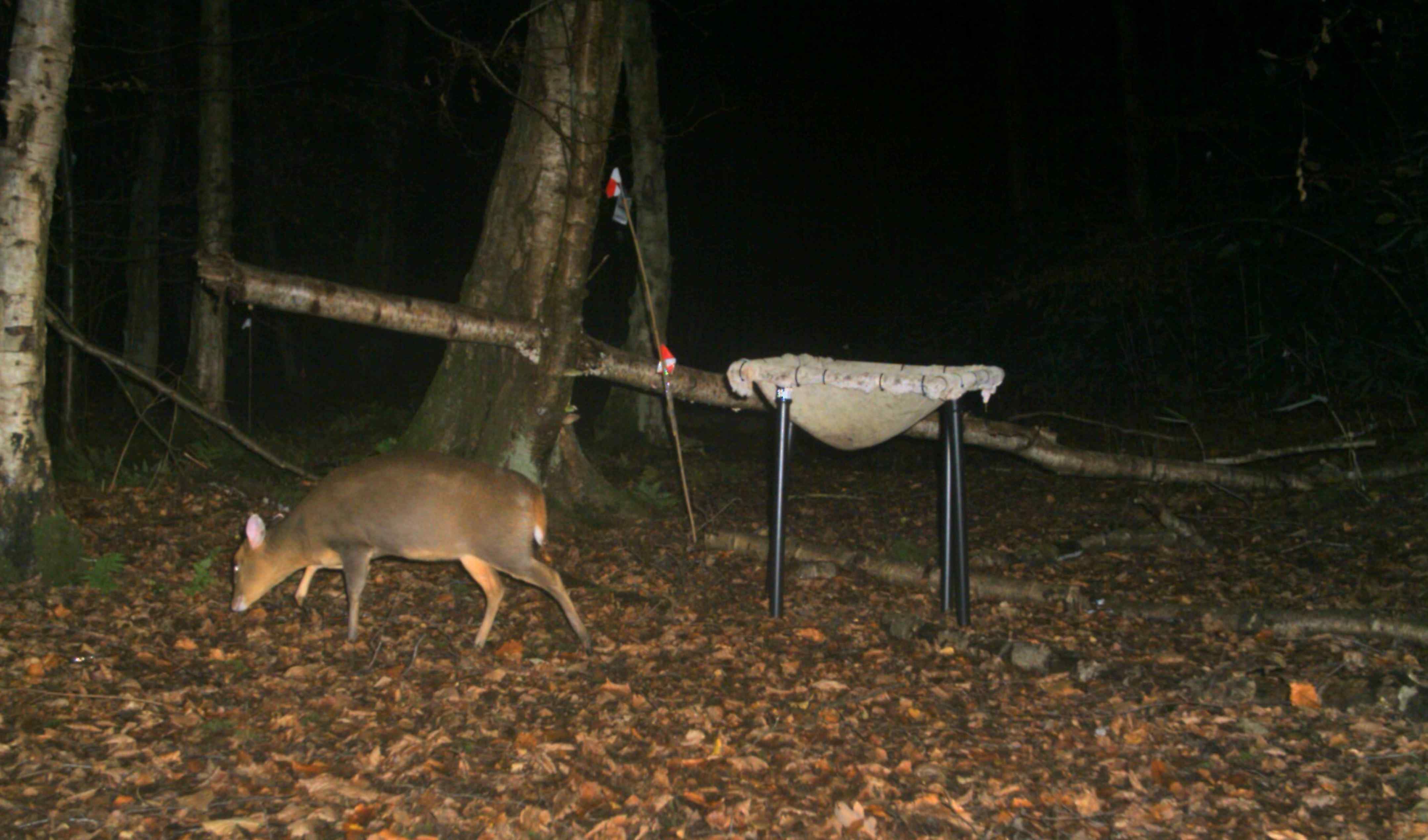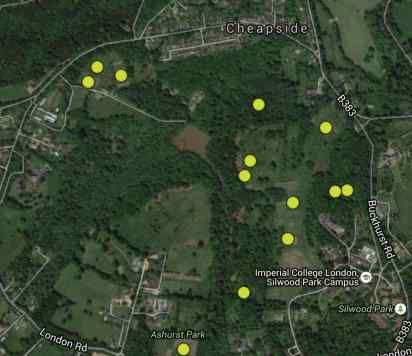There is still little understanding of the influence of individuals' phenotype on the dynamics of natural populations. Wild rodents of the ancient woodland at Nash's Copse, Silwood Park are monitored to assess the relative contribution of individual behaviours and environmental factors driving the population dynamics of these animals. The study species are the wood mouse (Apodemus sylvaticus), a small rodent common in Europe and North-western Africa, the yellow necked mouse (Apodemus flavicollis) and the bank vole (Myodes glareolus).
The study site is an ancient woodland of about 2.5 ha dominated by trees of birch (Betula pendula and Betula pubescens), beech (Fagus sylvatica), sycamore (Acer pseudoplanatus) and hazel (Corylus avellana). It has large patches of rhododendron (Rhododendron ponticum) and bamboo (Sasa palmate), and the ground is covered with bluebell (Hyacinthoides non-scripta), bracken (Pteridium aquilinum) and wood sorrel (Oxalis acetosella). Nash's Copse woodland is divided in quadrants where three types of core data have been collected for this project. First, regular trapping sessions allow monitoring of rodent populations with variables that include sex, weight, body fat, reproductive state, and presence of ecto-parasites. Mice collected in these sessions are tagged with Radio Frequency Identification (RFID) PIT-tags and released. Second, monitoring of mice' habitat use are done using mobile data logger boxes rotated daily between the study site quadrants. Finally, mapping of habitat features and estimation food availability has allowed a detailed and dynamic habitat characterization.
The mouse project was created and is run by Dr. Aurelio Malo. It is currently supported by a Ramon y Cajal Senior Research Fellowship to Aurelio Malo. Other funding includes an European Research Council grant to Professor Tim Coulson, a Marie Curie action to Aurelio Malo, and a NERC Independent Research Fellowship to Dr. Sarah Knowles. PIT-tag loggers for this project were designed by Aurelio Malo in collaboration with Francis Instruments.
details mouse project
Experimental design
Nash’s Copse is divided into a grid of 10 x 10 m quadrants, each one containing a trap station that consists of a small wooden box fix to the ground with an iron rod. During trapping sessions the boxes, which can move in any direction, host small Sherman traps that are baited and set up from before sunset to sunrise time the next morning. Trapping sessions are conducted with a frequency that ranged from weekly to every three weeks. Captured rodent are classified in species, sex and developmental state using body weight (adults, subadults, and juveniles). The presence and amount of ecto-parasites, the anogenital distance (proxy for testosterone levels), and a body fat score that assessed the animal energy reserves are also recorded. Individuals are identified with subcutaneous PIT-tags and ear clipping if they are heavier than 15 g or with fur clipping if they are juveniles. All animals are released in the same quadrant where captured. PIT-tags allow record recaptures during trapping sessions and monitor daily individual mouse spacio-temporal habitat use. Space use has been monitored with ten mobile PIT-tag loggers that are rotated daily between the study site grid squares.
The microhabitat of Nash's Copse plot has been characterized seasonally in maps that record the location and dimension of standing and felled trees, patches of rhododendron, bamboo and other dominant shrub species, and areas with wood debris. Food availability is also estimated with the collection and identification of invertebrates and seeds in spring and autumn, respectively.
Data
The mouse project ran uninterrupted from October 2008 to December 2015. Maintaining of the experimental set up and trapping has starteed again in April 2018. We collect information of three rodent species and their habitat: wood mouse (Apodemus sylvaticus), yellow necked mouse (Apodemus flavicollis), and bank vole (Myodes glareolus).
Data from the long-term rodent monitoring facility contains:
1) Population level data including density, sex ratio and age structure.
2) Individual level information that include weight, morphology (anogenital distance), development (juvenile adult), physiology (reproductive state) and space-use behaviour.
3) Habitat variables that influence rodent populations including vegetation cover, food abundance, and weather.
4) Species interaction data with parasites (ecto-parasites and gut bacteria), predators, prey and competitors.
Publications
Godsall B, Coulson T, Malo AF (2014) From physiology to space use: Energy reserves and androgenization explain home-range size variation in a woodland rodent. Journal of Animal Ecology 83: 126–135.
Malo AF, Godsall B, Prebble C, Grange Z, McCandless S, Taylor A, Coulson T (2013) Positive effects of an invasive shrub on aggregation and abundance of a native small rodent. Behavioral Ecology 24: 759–767.
Related Links
